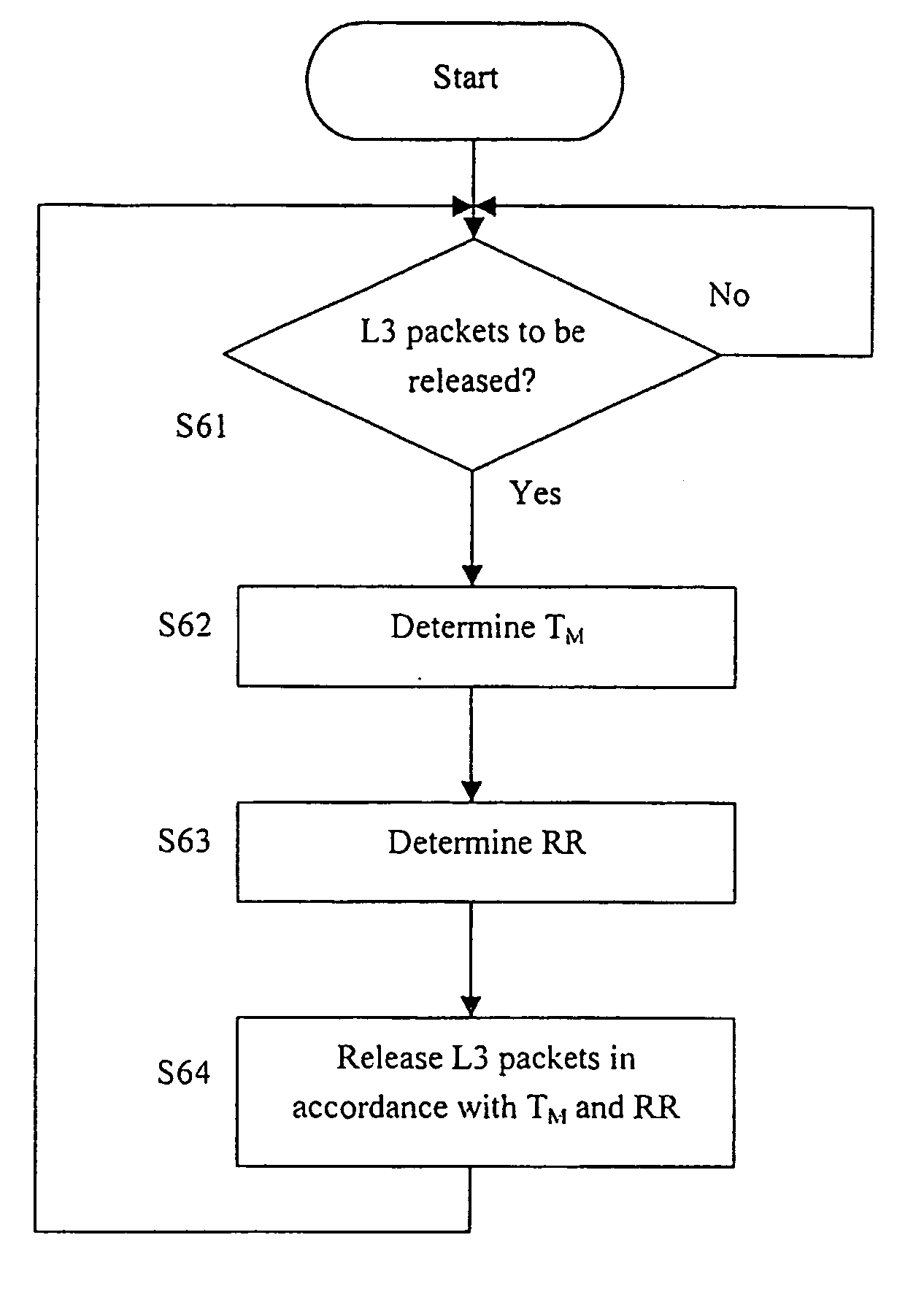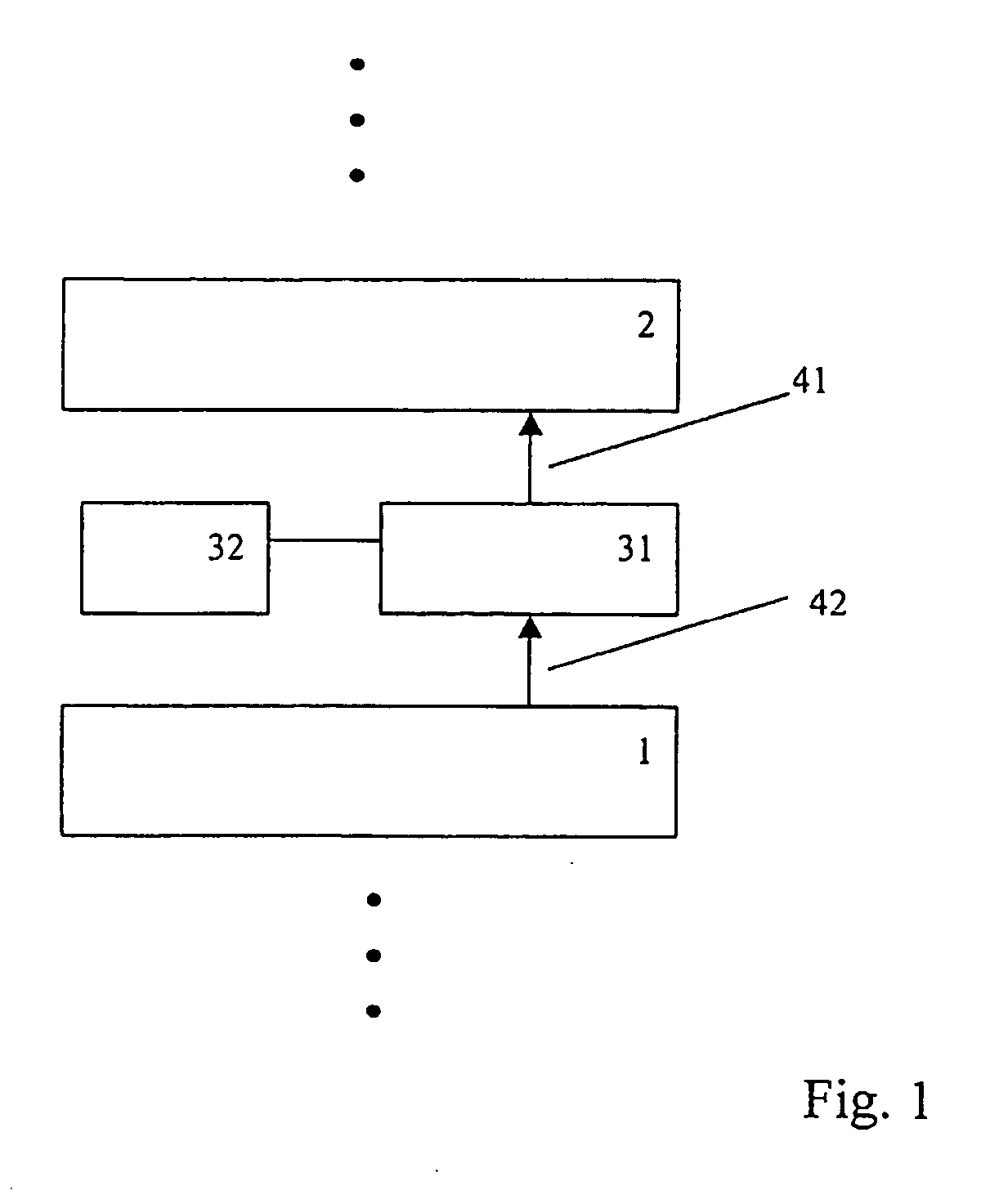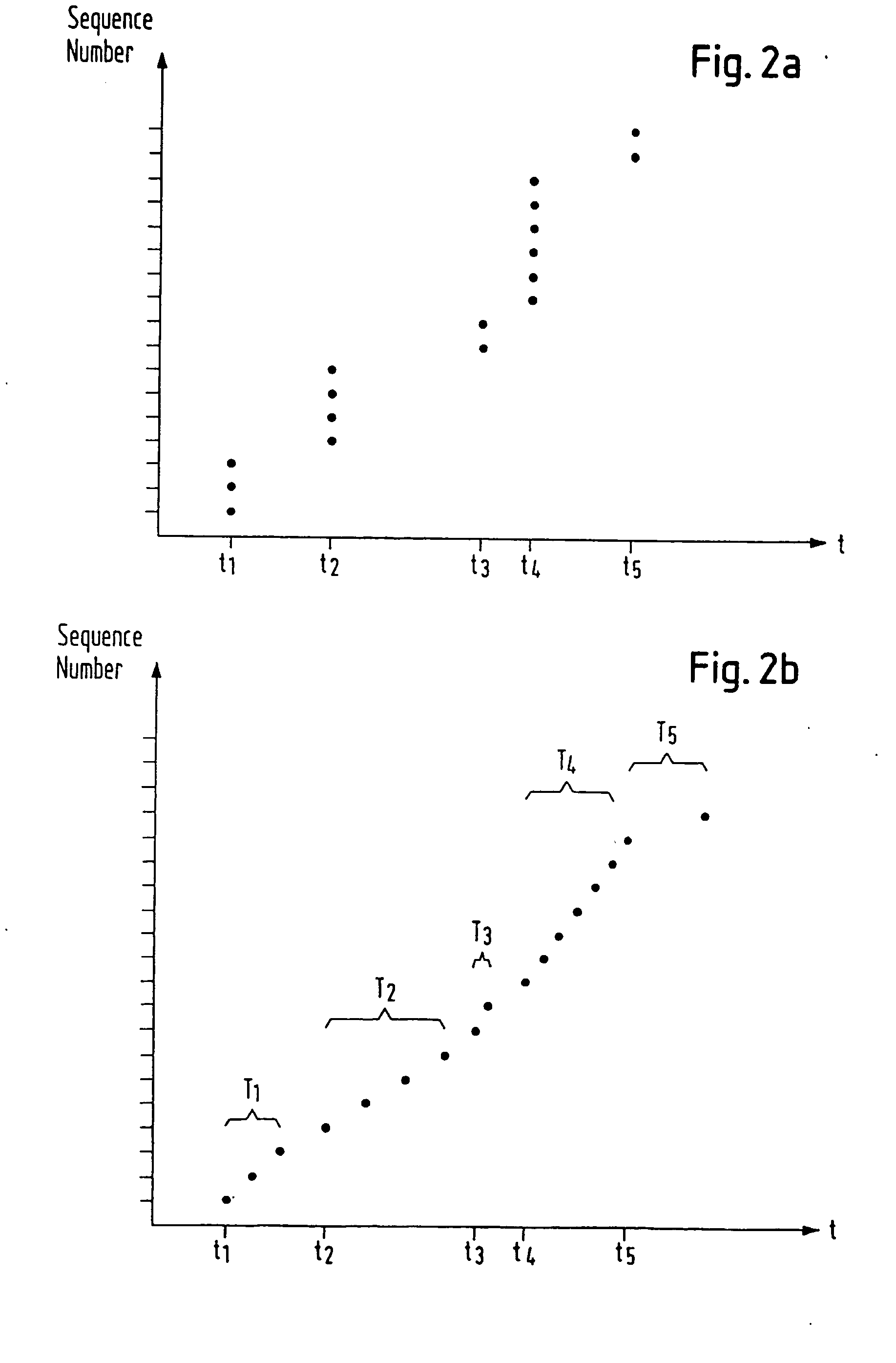Data unit handling device and method of controlling a data unit handling device
a data unit and handling device technology, applied in data switching networks, time-division multiplexing selection, multiplex communication, etc., can solve problems at a higher layer
- Summary
- Abstract
- Description
- Claims
- Application Information
AI Technical Summary
Benefits of technology
Problems solved by technology
Method used
Image
Examples
Embodiment Construction
[0035] FIG. 1 shows a schematic representation of a basic embodiment of the present invention, where reference numeral 1 refers to a first protocol layer, reference numeral 2 refers to a second layer that lies above the first protocol layer 1, 31 represents a buffer that is operable to accumulate a plurality of data units that conform to the second protocol layer 2 before being released upwards to the second protocol layer 2 and 32 refers to a buffer controller for controlling the buffer 31. Arrow 42 indicates a passing of data from the first protocol layer 1 to buffer 31, and arrow 41 indicates a release of data from buffer 31 to a second protocol layer 2.
[0036] The dots at the top and bottom of FIG. 1 indicate that other protocol layers may lie above the second layer 2 and that further protocol layers may lie below the first protocol layer 1. Also, it may be noticed that the first and second protocol layers do not need to be contiguous, although they preferably are. In the case of...
PUM
 Login to View More
Login to View More Abstract
Description
Claims
Application Information
 Login to View More
Login to View More - R&D
- Intellectual Property
- Life Sciences
- Materials
- Tech Scout
- Unparalleled Data Quality
- Higher Quality Content
- 60% Fewer Hallucinations
Browse by: Latest US Patents, China's latest patents, Technical Efficacy Thesaurus, Application Domain, Technology Topic, Popular Technical Reports.
© 2025 PatSnap. All rights reserved.Legal|Privacy policy|Modern Slavery Act Transparency Statement|Sitemap|About US| Contact US: help@patsnap.com



